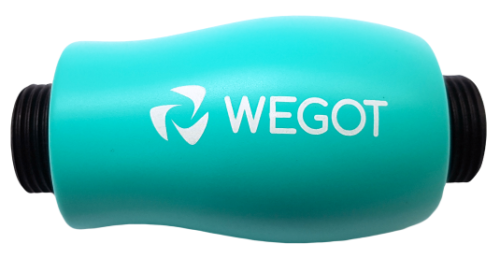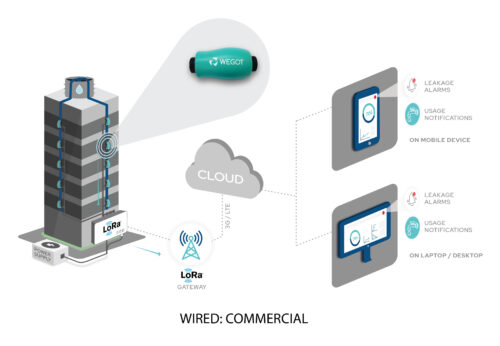When you build a home and look for a water meter, the first results are mechanical water meters. They cost less than Rs 2000, and are made of metallic material. It seems like the simplest and most obvious choice. Easy to purchase, repair or replace.
We asked Vijay Krishna, one of our co-founders and the CTO of WEGoT why we were producing sophisticated water meters. What problems is it solving? How do we choose the right kind of meter for our needs?
Let’s see how WEGoT evolved to meet a growing need for high precision, smart meters.
Q: What led you to work in this field? Why water meters?
Vijay Krishna: A heat pump manufacturer asked us to design a water meter so that the manufacturer could accurately measure how much water was being heated by his system and he could bill according to usage.
When we finished designing the system, it was a time of acute water crisis in Chennai. Offices and residences were heavily reliant on private water sources – tanker lorries. We realised that there was no reliable method to track and bill water usage. No way to see if the water being provided by tankers was of the correct quantity, if it tallied with the usage in various houses or offices.
We installed our first trial. It was a local system – it had an LCD display and a master panel.
Q: When did WEGoT begin?
VK: In 2015.
We were looking to rationalise billing of water usage – pay for what you use.
Mechanical meters serve the purpose, especially for a single household with a limited number of inlets. For instance, a 3BHK independent house will have 4 inlets. One meter in each of these inlets will give aggregated readings. But what if there are 100 apartments in a complex? It quickly adds up to 400 metering points, each of which will have to be manually read. It becomes difficult to rationalise billing.
Also, these meters are often stolen – they are made of brass. You won’t know if the meters have been stolen or have stopped working. You need to physically visit every spot where a meter has been installed. It is cumbersome and ineffective, and it isn’t easy to rationalise billing.
In large residential complexes or commercial buildings, mechanical meters appear cheaper in the short term, but the costs add up over time and become more expensive in the long term.
Q: Are there better meters that don’t use physical flow of water?
VK: We had started with the paddle wheel system and moved to meters that had a magnet on top. This reduced the number of moving parts and therefore the chances of mechanical failure. Also, they had about 95% accuracy and provided some amount of data.
But there were difficulties with this type of meter as well. They measured movement of any fluid (air or water) in any direction. So, the meter would measure back flow, and airflow.
Q: So, the meter is running when the tap is opened and before any water comes through?
VK: Yes. Most multi-story apartments have a hydro-pneumatic system. But this means that the meter will measure water if the apartment above you uses water.
There are other problems as well. They can be tampered using a magnet, they cannot measure low flow rates. For instance, if the RO water system is running, the meter won’t register that water flow.
Nearly 20% of water wasn’t being metered.
Now, the magnetic flow system is being used for larger pipes.
Q: Is this when you moved to the ultrasonic system?
VK: Yes, since 2018, we have been deploying the piezoelectric, ultrasonic meters. These are the gold standard for smaller pipes – up to 150 mm in width. By the end of 2019, and the beginning of 2020, we started deploying these in much larger numbers.

Q: Can you give us a comparison of the readings in a mechanical meter and ultrasonic sensor?
VK: If actual usage is 1000 litres, a paddle wheel would show a reading of about 800 L, and the ultrasonic would show a reading of 980 L.
Q: What are some other features in the new sensors?
VK: They are IoT-enabled. That means that there is no need to manually read the data. The data comes to you. Sensor downtimes and failures are immediately notified. The sensors are connected by cable to a LoRa duct which then relays the data to the cloud.

Q: What is in the pipeline now?
VK: Currently we are on a hybrid system. The sensors are connected by a cable to a master panel – this part is the wired architecture. The LoRa then communicates the data to the cloud wirelessly. But there are difficulties with the wired system. Wires can get chewed by rats or get shot if they get submerged during a flood.
In 6-8 months, we are hoping to move to a fully wireless system. This will reduce our deployment time, increase serviceability, and make our system more robust.
